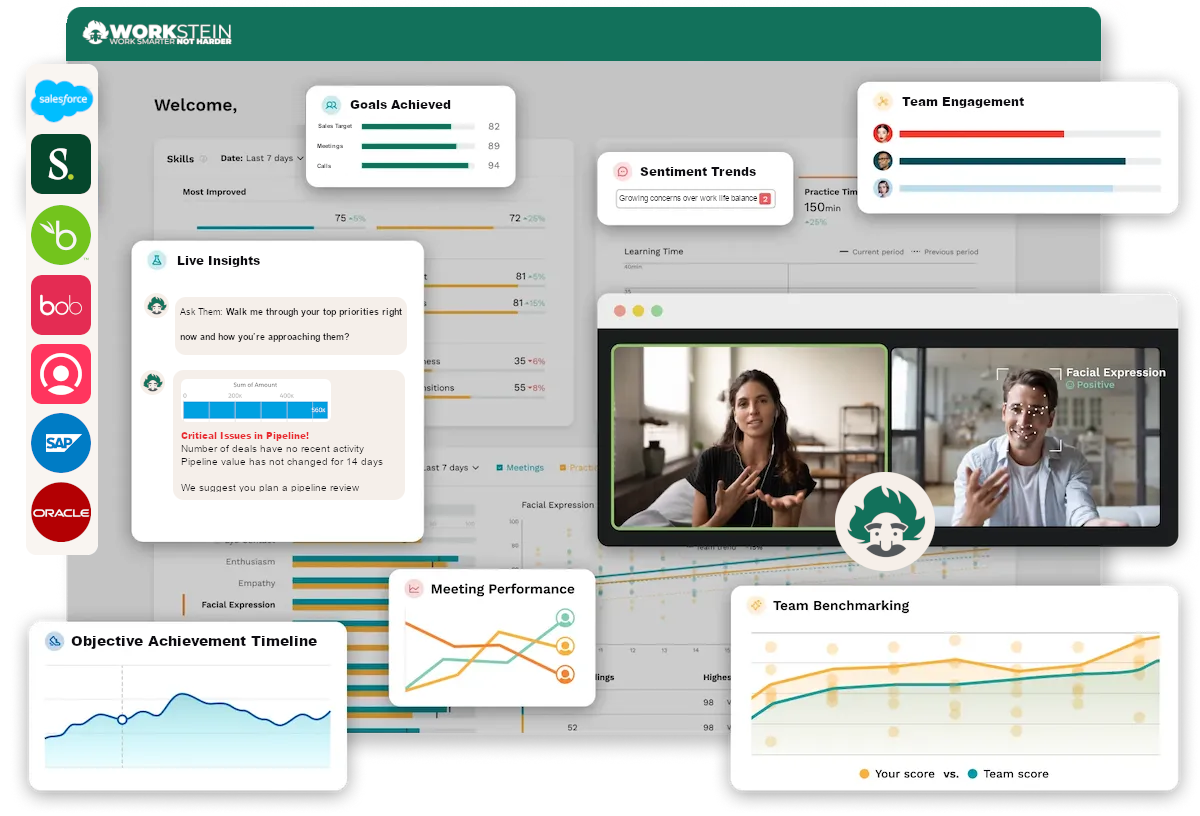The world of work has undergone a radical transformation—and with it, the way we manage and measure performance must evolve. Gone are the days when annual reviews alone could offer a true picture of an employee’s contribution, engagement, or potential. Today, forward-thinking organisations are embracing a model of continuous feedback powered by integrated platforms like Workstein to create more agile, motivating, and human-centred performance cultures.
Where We’ve Come From: The Traditional Review Model
Historically, performance reviews were a once- or twice-yearly event. A formal, top-down meeting between manager and employee, often based on vague recollections, subjective observations, and goals that may have lost relevance months prior.
Problems with the traditional model:
-
Infrequent: Feedback came too late to make a difference.
-
Subjective: Managers relied on memory, often favouring recent events (recency bias).
-
Demotivating: Employees dreaded the process and saw little value.
-
Disconnected: Reviews often felt like a compliance task rather than a growth opportunity.
In an age of real-time collaboration and agile goals, such an outdated system has little chance of motivating or retaining top talent—especially in distributed, remote, or hybrid teams.
The Shift to Continuous Feedback
Modern work demands ongoing, contextual feedback that empowers employees to improve in the moment—not six months later. The move to continuous performance conversations reflects broader shifts:
-
Remote & hybrid work: Managers need real-time visibility without micromanaging.
-
Generational change: Millennials and Gen Z expect coaching, not command-and-control reviews.
-
Agile business cycles: Goals shift rapidly, requiring more frequent course correction.
-
Mental health & wellbeing: Regular check-ins foster trust and psychological safety.
As performance becomes more about dialogue than judgement, technology has stepped in to support this cultural evolution.
How Workstein Powers Continuous Feedback
Workstein’s Performance Module is built specifically to meet the demands of modern, distributed teams. It blends live interactions, automated intelligence, and structured data into a seamless, real-time performance workflow:
| Feature | Description |
|---|---|
| 🗓️ Meeting Scheduling | Integrated with Outlook/Google for automatic 1:1s and review meetings |
| 🧠 AI-Powered Pre-Summaries | Auto-generated briefings using CRM, HRIS, and past data |
| 🎙️ Live Transcription & Insights | Real-time note capture and conversation analysis |
| 📈 Post-Meeting Analysis | AI-driven sentiment tracking, KPI mapping, and follow-up nudges |
| 🎯 Coaching & Goal Reminders | Smart prompts for performance improvement and skills development |
| 📚 Searchable Library | On-demand access to all past meetings and development progress |
Comparison: Review Models at a Glance
| Criteria | Annual Reviews | Quarterly Check-ins | Continuous Feedback (e.g., Workstein) |
|---|---|---|---|
| Frequency | Yearly or biannually | Every 3 months | Ongoing, weekly/monthly |
| Manager Time Investment | High (1-off) | Moderate | Low (integrated into regular workflow) |
| Real-time Accuracy | Low | Medium | High |
| Employee Engagement | Low | Moderate | High |
| Data Richness | Low, subjective | Moderate | High, objective + behavioural |
| Goal Agility | Low | Medium | High |
| Psychological Safety | Often absent | Variable | Embedded through trust-building |
The Psychology Behind Continuous Feedback
Modern performance approaches are grounded in psychology and behavioural science. Some key principles:
-
Reinforcement Theory: Timely feedback reinforces desired behaviours (Skinner, 1953).
-
Goal-Setting Theory: Feedback supports goal clarity and stretch achievement (Locke & Latham, 1990).
-
Psychological Safety: Regular, low-stakes check-ins build trust and openness (Edmondson, 1999).
-
Self-Determination Theory: Autonomy, mastery, and relatedness are all strengthened through coaching-style conversations (Deci & Ryan, 1985).
Thought leaders like Marcus Buckingham (author of Nine Lies About Work) argue that people don’t want ratings—they want attention. And feedback shouldn’t be a score—it should be a conversation.
Benefits of Continuous Feedback Culture
-
🎯 Agility: Adapt goals and actions quickly
-
🤝 Trust: Build manager-employee relationships over time
-
🔄 Clarity: Align on expectations regularly
-
🚀 Development: Identify skill gaps early and take action
-
📊 Better Data: Make informed, real-time decisions
Common Pitfalls—and How to Avoid Them
| Pitfall | How to Address |
|---|---|
| Feedback fatigue | Focus on meaningful, not constant, feedback; automate summaries. |
| Poor manager capability | Use coaching, templates, and AI-assisted insights. |
| Lack of follow-through | Automate reminders and tie feedback to actionable goals. |
| Feeling monitored | Frame feedback as support, not surveillance—prioritise psychological safety. |
The Future: Predictive, Personalised Performance
Continuous feedback is not just a trend—it’s the future. Platforms like Workstein are already paving the way for predictive performance management, AI-driven coaching, and wellbeing-integrated insights. When performance and culture align in real time, organisations move faster, retain talent longer, and grow stronger.
Ready to modernise your performance management?
Visit www.workstein.com to learn how our platform transforms conversations into culture.


